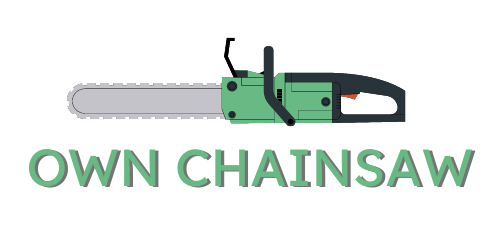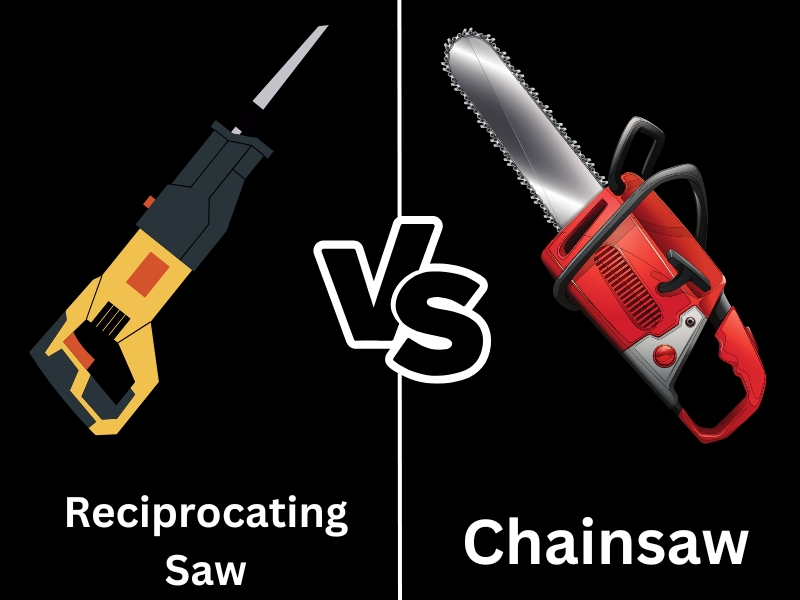
Oh boy, oh boy, isn’t it always a treat when we get to tussle with the titans of tearing through timber and other tough materials? Yes, dear reader, it’s the clash of the power tool titans: the ever-mighty chainsaw vs the relentless reciprocating saw.
Isn’t it frustrating to be stuck on the wrong side of a material that refuses to bend while you’re working on your DIY project? Perhaps you’re clearing a fallen tree in the woods, or remodeling your home and come across a stubborn piece of metal pipe. Ooh, that frustration!
We had all been there, wielding our little handsaws, sweat pouring down our brows, arms quivering in protest, wishing for something more. But what’s the perfect powerhouse to help you out, a chainsaw or reciprocating saw? We’re about to delve into the nitty-gritty details of these two saw stalwarts, my tool-loving friend. Get ready for the ride.
Key Features of a Chainsaw
1. Power Source – Chainsaws are powered by gas, corded electricity, or battery.
2. Chain and Guide Bar – The guide bar supports a rotating chain with sharp teeth for efficient cutting.
3. Safety Measures – Modern chainsaws feature safety mechanisms like chain brakes and catchers.
4. Automatic Oiling System – This maintains optimal chain and guide bar lubrication.
Typical Uses of a Chainsaw
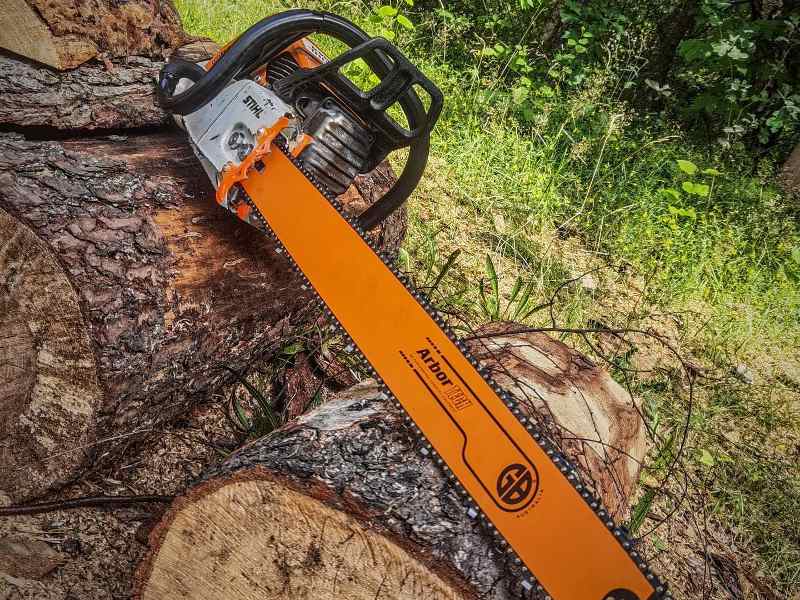
Chainsaws are widely used for tasks requiring power and speed:
1. Tree Felling – For downing large trees, a chainsaw is unmatched.
2. Limbing and Pruning – Chainsaws easily trim and prune branches.
3. Firewood Processing – Splitting logs for firewood is easy with chainsaws.
4. Emergency Services – They’re used for swift obstacle clearance and access creation.
5. Artistic Woodworking – Chainsaws can even create stunning wood sculptures!
What is a Reciprocating Saw?
A reciprocating saw is a handheld power tool designed for making rough cuts in building materials or for demolition. The blade of this tool reciprocates back and forth, giving it its affectionate name, the Sawzall, a Milwaukee Tool brand name.
Key Features of a Reciprocating Saw
1. Power Source – Similar to chainsaws, reciprocating saws can be powered by electricity, batteries, or compressed air.
2. Interchangeable Blades – The blades can be swapped out to cut different materials, from wood and metal to ceramic and plastic.
3. Variable Speed Control – This allows you to control the speed of the cut, making it easier to handle different materials and tasks.
4. Orbital Action – Some models offer orbital movement for more aggressive cutting.
Typical Uses of a Reciprocating Saw
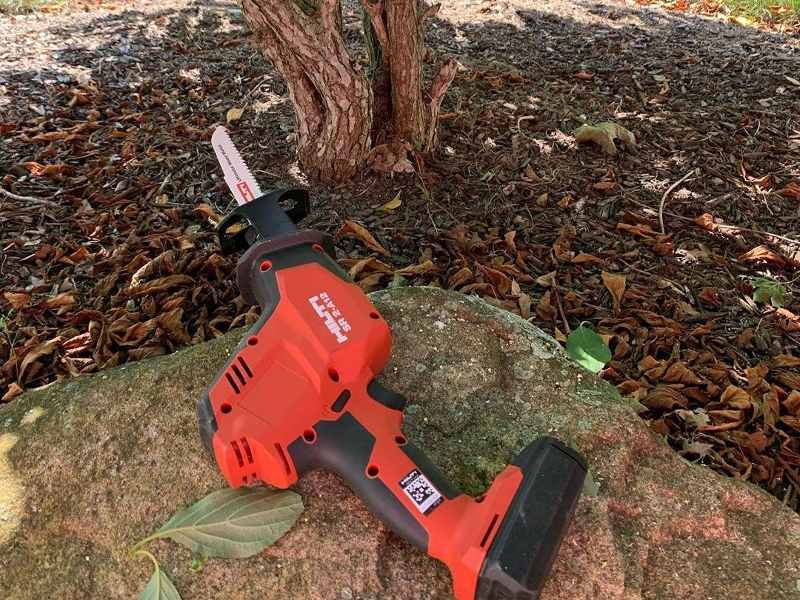
Reciprocating saws are the go-to tools for many tasks where precision isn’t as important as getting the job done:
1. Demolition Work – These saws are the first choice for demolition tasks. They can tear through walls, floors, and ceilings with ease.
2. Remodeling – They’re handy for cutting out old windows or trimming door jambs.
3. Plumbing and Electrical Work – With a metal cutting blade, they can cut pipes and conduit.
4. Landscaping – With a pruning blade, they can cut tree branches and shrubs.
5. Rescue Operations – They’re used to cut through wreckage in rescue scenarios.
In-depth comparison | Chainsaw Vs Reciprocating saw
When comparing a chainsaw and a reciprocating saw, there are several factors to consider. Here are some points of comparison between the two:
1. Power and Performance
Chainsaw – Chainsaws are considerably more powerful than reciprocating saws. They are designed to handle heavier tasks such as felling trees, slicing through thick branches, and splitting logs. The high-power output of chainsaws makes them suitable for intensive outdoor work and heavy-duty applications.
Reciprocating Saw –These saws are less powerful but more versatile than chainsaws. The power of a reciprocating saw is sufficient for tasks like cutting through pipes, nails, and thin tree branches. They are commonly used in construction and demolition, thanks to their ability to cut a wide range of materials including wood, metal, and plastic.
2. Ease of Use and Handling
Chainsaw – The chainsaw is bulkier and harder to maneuver, and it requires a high level of physical strength and stamina. They can be challenging to control accurately due to the constant, high-speed chain movement. According to recent OSHA estimates, there are around 250 chainsaw-related deaths per year.
Reciprocating Saw – These saws are easier to handle and more lightweight, making them ideal for overhead work or work in tight spaces. They are typically designed with ergonomic handles to reduce user fatigue. Their push-and-pull blade motion allows for more precise and controlled cuts.
3. Safety Features
Chainsaw – Due to their high power and cutting speed, chainsaws pose inherent risks. In addition to chain brakes, handguards protect the hands from debris and accidents, and safety throttles prevent the chainsaw from accidentally starting.
Reciprocating Saw – Reciprocating saws include lock-off buttons to prevent unintentional operation; electric brakes to stop the blade when the trigger is released; and blade guards to protect the user from the cutting blade.
4. Cost Comparison
Chainsaw – Because chainsaws have higher power outputs and specialized functions, they are generally more expensive. The cost can vary depending on the brand, power source (gas, corded, or battery), and bar length.
Reciprocating Saw – Reciprocating saws are typically less expensive than chainsaws. Like chainsaws, their price can fluctuate based on the power source (corded or battery), brand, and included features.
5. Noise and Vibration
Chainsaw – Watch out for noise and vibration from chainsaws in residential areas, which can cause fatigue in the user.
Reciprocating Saw – Compared to chainsaws, reciprocating saws are usually quieter and produce less vibration, making them more comfortable to use.
6. Versatility
Chainsaw – Chainsaws are more specialized tools. They are primarily used for cutting wood, especially in outdoor settings, limiting their versatility.
Reciprocating Saw – These are versatile tools capable of cutting a variety of materials, including wood, metal, ceramic, and plastic, making them suitable for a wide range of tasks from construction and demolition to plumbing and electrical work.
7. Market Size and Growth Prospects
The reciprocating saw blades market and the chainsaw market show distinct trends in terms of their size and growth rate.
Chainsaw: The global chainsaw market presents a more substantial size and a consistent growth trend. The market was valued at around USD 3.60 billion in 2021. It is expected to reach USD 4.92 billion by 2030, growing at a Compound Annual Growth Rate (CAGR) of 3.5%. The chainsaw’s popularity is attributed to the chainsaw’s use in the commercial and residential wood-cutting industries.
Reciprocating Saw: In 2022, the global reciprocating saw blades market was estimated to be worth USD 141.9 million. This value indicates a niche market, driven by the saw’s versatility across a variety of industries. A slowdown in many industries has affected the growth projections for this market as a result of the COVID-19 pandemic.
When to Use a Chainsaw over a Reciprocating Saw?
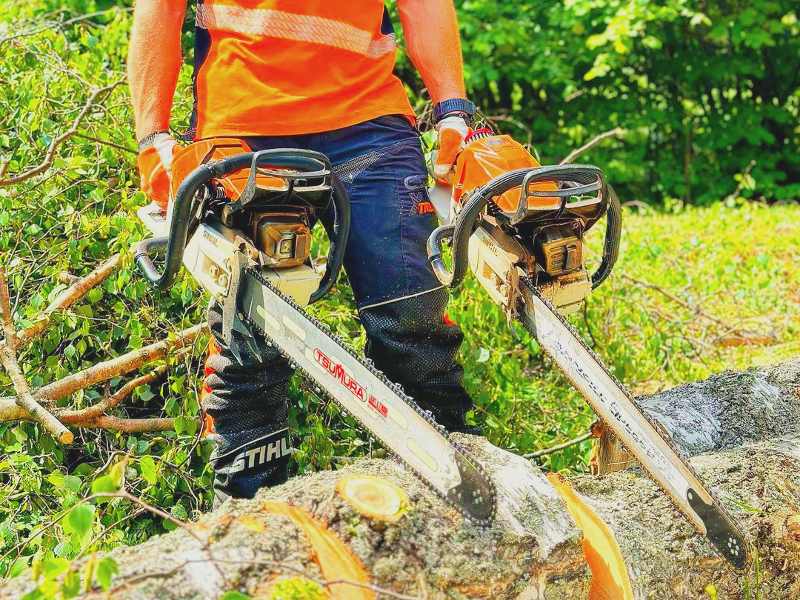
When deliberating between the use of a chainsaw or a reciprocating saw, it’s important to identify the specific situations or tasks where the robust functionality of a chainsaw would offer superior performance:
1. Large-Scale Tree Cutting
Chainsaws, which have powerful motors and extended guides, are well-suited for cutting thick logs and large trees.
2. Tree Felling
The task of felling trees calls for the unique features and high-powered performance of chainsaws. With chain brakes and bucking spikes, these tools are ideal for safely and effectively bringing down trees.
3. Processing Firewood
The quick and efficient processing of variously sized logs into firewood is another task where chainsaws truly shine. Their robust design and powerful motors enable them to rapidly cut through logs, making them a popular choice for this task.
4. Strenuous Outdoor Work
Chainsaws are ideal for cutting through dense materials used in construction and forestry projects, as well as for land clearing. Their power and design make them ideal for these labor-intensive tasks.
5. Extended Cutting Durations
Despite being heavier and potentially causing fatigue faster, chainsaws are engineered for durability and sustained cutting power. As such, they prove more advantageous in scenarios requiring prolonged cutting sessions.
When to Use a Reciprocating Saw over a Chainsaw?
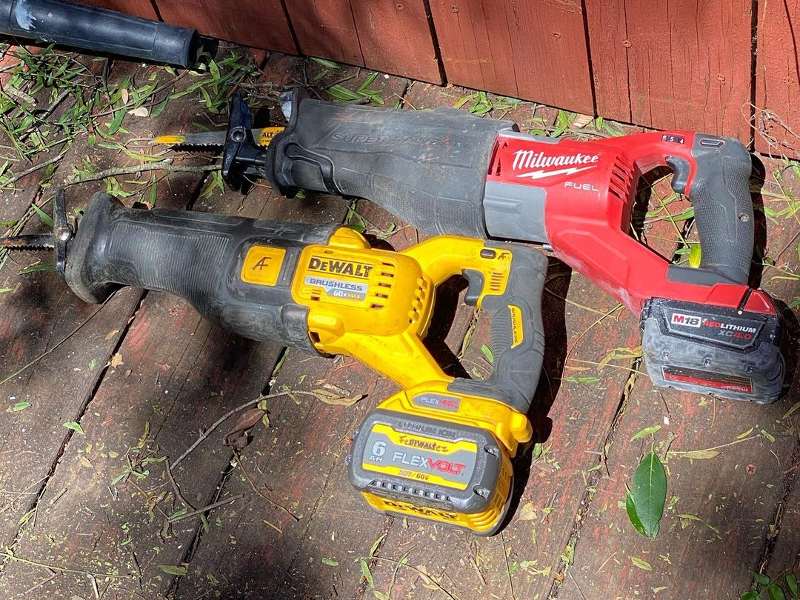
In the process of deciding between a reciprocating saw and a chainsaw, one should note that the reciprocating saw may be more advantageous for certain tasks or scenarios:
1. Operations in Confined Areas
Reciprocating saws are more maneuverable and compact than chainsaws in tight spaces. This makes them an ideal choice for activities such as trimming trees or cutting branches in hard-to-reach areas.
2. Tasks Requiring Precision
Due to their versatility and wide application range, reciprocating saws are ideal for tasks requiring precision and control. For instance, their accuracy is invaluable when it comes to cutting through materials like nails or pipes.
3. Cutting Smaller Logs and Branches
The design and function of reciprocating saws make them well-suited for cutting smaller logs and branches. Therefore, for tasks like pruning and clearing undergrowth, these tools can be more efficient and easier to handle.
4. Safer Operation
When properly operated, reciprocating saws can be safer than chainsaws. Their design minimizes the risk of kickback, a significant hazard associated with chainsaw use.
5. Demolition Tasks
By cutting through walls and removing old fixtures with ease, reciprocating saws are an excellent choice for demolition work. Their versatility, control, and power make them well-equipped for these types of heavy-duty indoor tasks.
Conclusion
Having compared chainsaws and reciprocating saws, we can see their differences and applications. Chainsaws offer superior cutting power and efficiency, making them the go-to tool for heavy-duty tasks like felling trees and cutting large branches.
On the other hand, reciprocating saws excel in versatility, allowing for precise cutting in tight spaces and various materials, such as metal and plastic.
When choosing between the two, it is crucial to consider the specific needs and requirements of your project. If you frequently tackle outdoor tasks that involve cutting thick wood, a chainsaw would be the ideal choice due to its raw cutting power.
In contrast, a reciprocating saw is more versatile and can tackle a range of cutting tasks, including demolition and remodeling projects.
Ultimately, both chainsaws and reciprocating saws have their own strengths and limitations. To make an informed decision, you must evaluate your needs, the scope of the project, and your personal preferences.
Understanding the features and applications of each tool will help you choose the one that best meets your needs.
FAQs
Which tool is easier to handle for beginners?
Reciprocating saws tend to be more user-friendly for beginners due to their lighter weight and easier handling. Chainsaws require more knowledge and experience to operate safely and effectively. However, it’s always essential to read the user manuals and follow safety precautions before using any power tool.
Can a reciprocating saw replace a chainsaw?
In some situations, a reciprocating saw can replace a chainsaw, especially when it comes to heavy-duty cutting, such as felling trees or cutting thick logs. Chainsaws are specifically designed for such applications and offer more power and efficiency.
Can a chainsaw be used for the same tasks as a reciprocating saw?
While a chainsaw can perform some tasks that a reciprocating saw can handle, it is not as versatile for a wide range of applications. In contrast to chainsaws, reciprocating saws handle various materials and can be used for demolition, plumbing, and electrical work.
Which tool is better for precision cutting or making detailed cuts?
For detailed cuts or precision cutting, a reciprocating saw is generally more suitable. Its ability to make controlled, back-and-forth motions provides greater accuracy and control when working on intricate cuts or in confined spaces.
Can I use a chainsaw blade on a reciprocating saw, or vice versa?
No, you cannot interchange the blades between a chainsaw and a reciprocating saw. Both tools have different blade designs and attachment mechanisms, making them incompatible. It is important to use the appropriate and compatible blades for each respective tool to ensure safe and effective cutting.
Can these tools be used for other tasks besides cutting?
In addition to cutting, chainsaws and reciprocating saws can also be used for other tasks when you add the right attachments. For example, chainsaws can be equipped with specialized blades for tasks like carving or sculpting, while reciprocating saws can be used for tasks such as demolition work or removing nails.
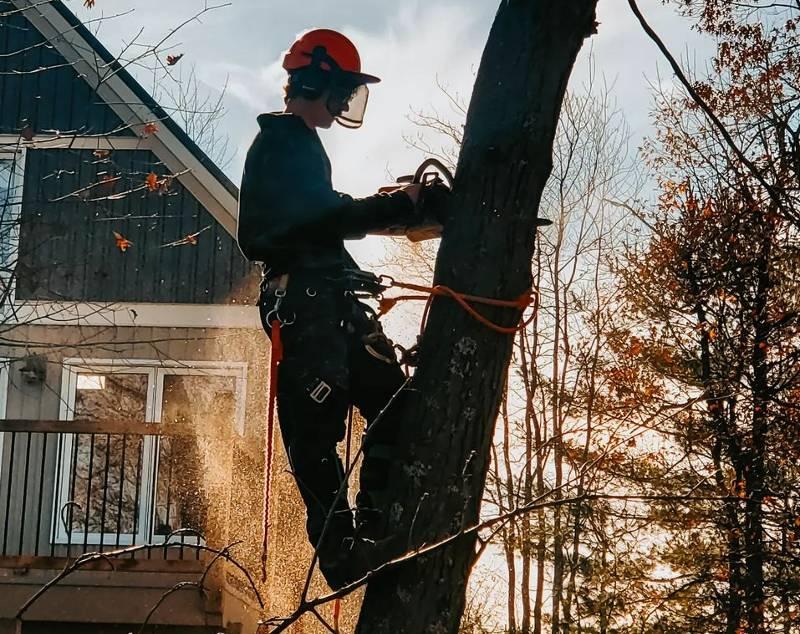
I am Senior Editor and CEO and I have been a chainsaw enthusiast for over 12 years. As a passionate chainsaw enthusiast, I have got a wealth of knowledge and experience with chainsaws, and I am constantly striving to expand my expertise and knowledge. Read More!
